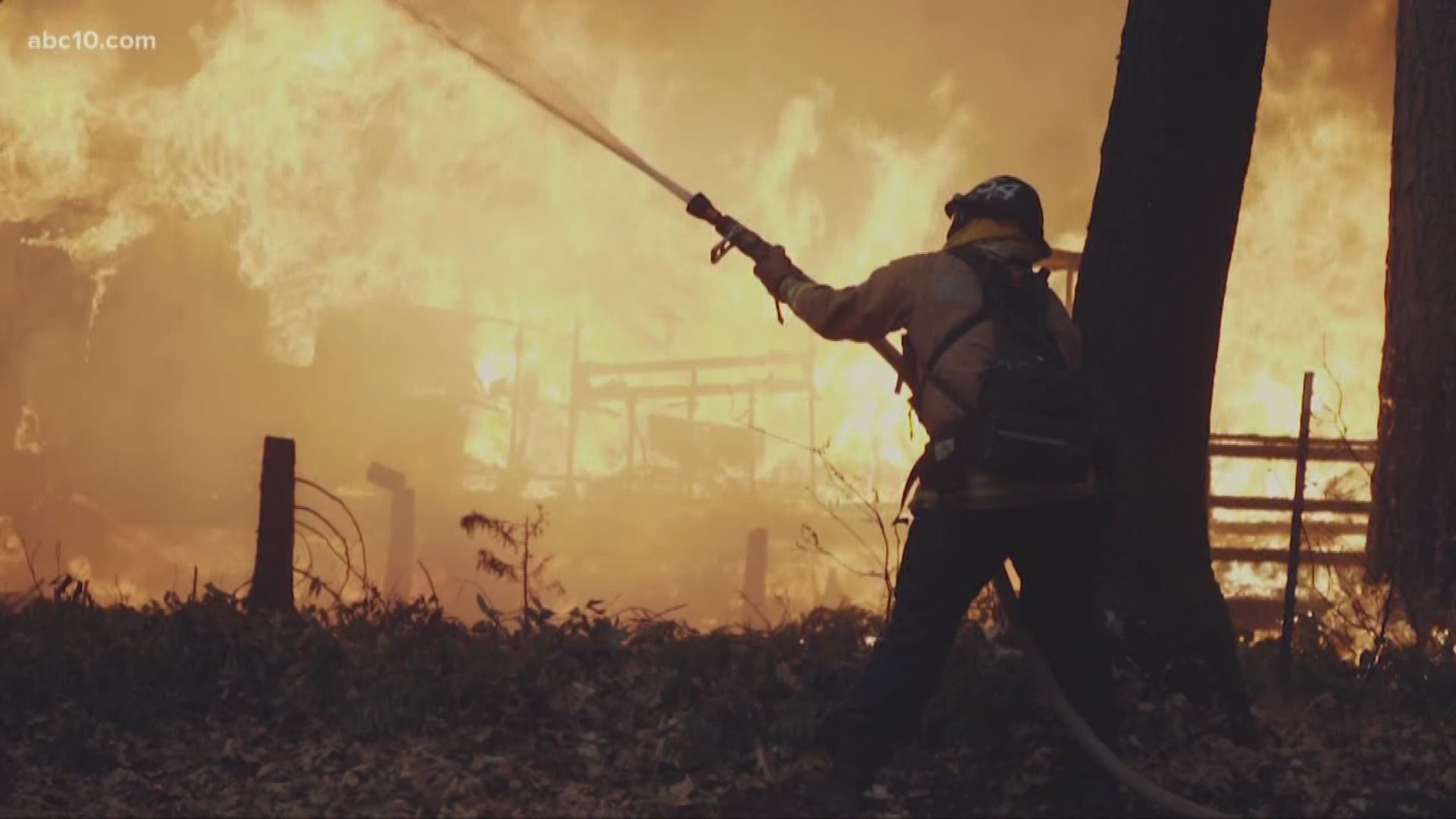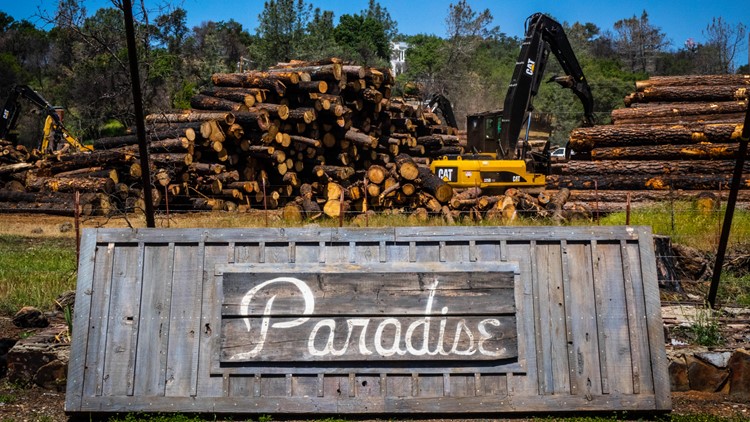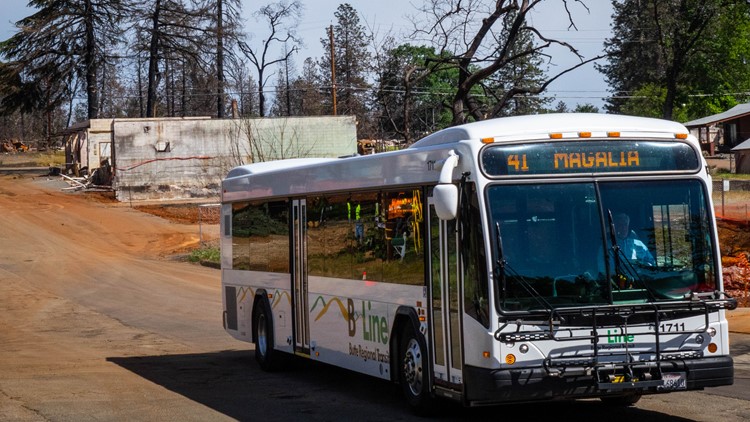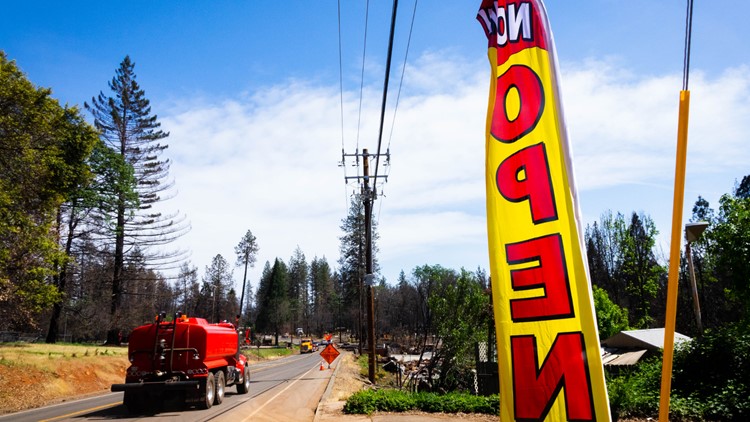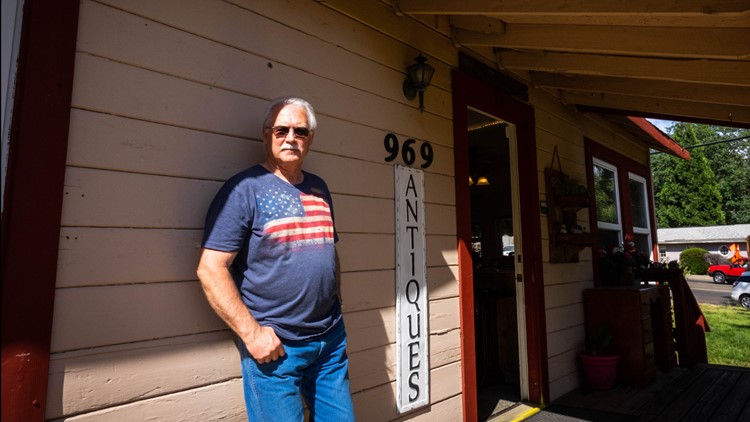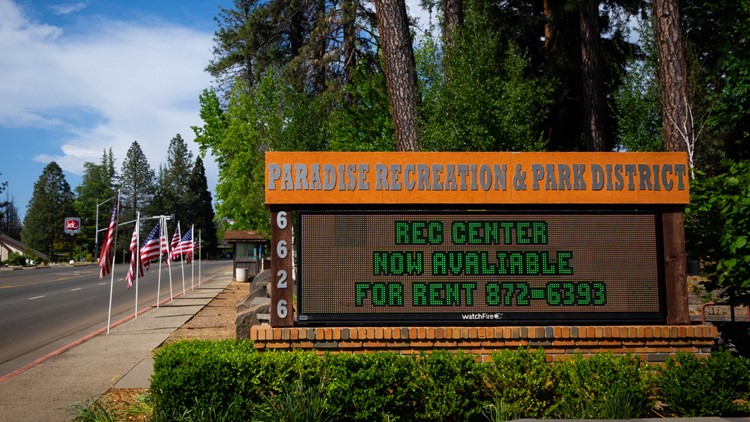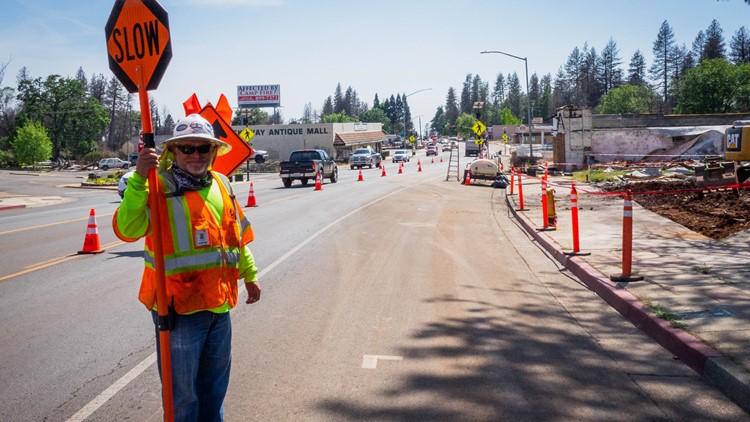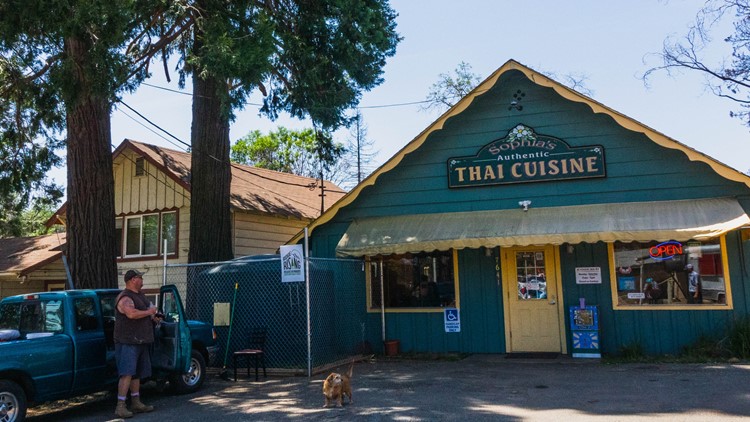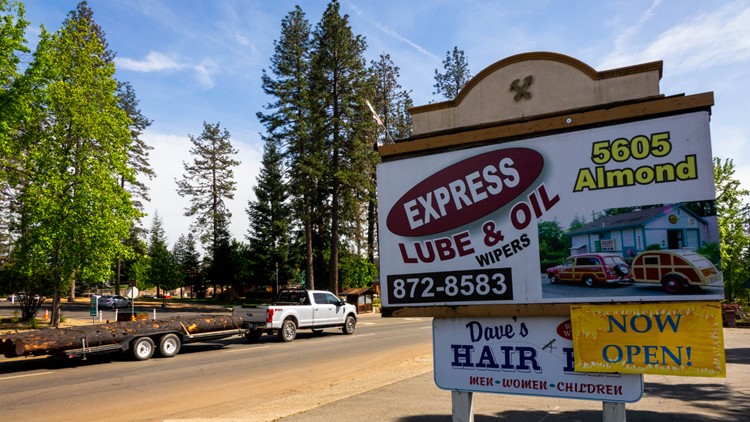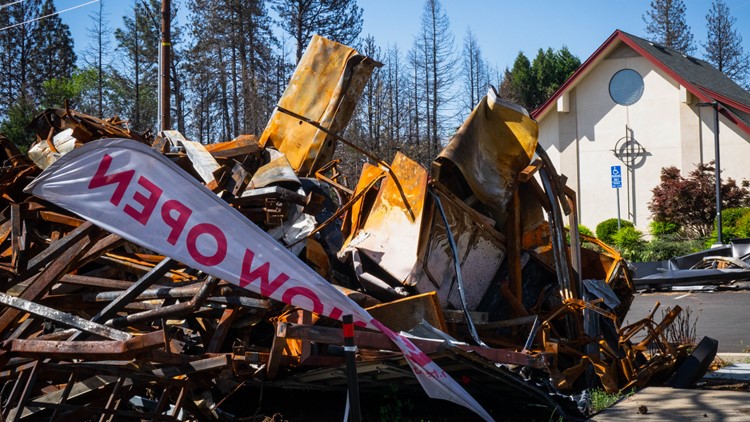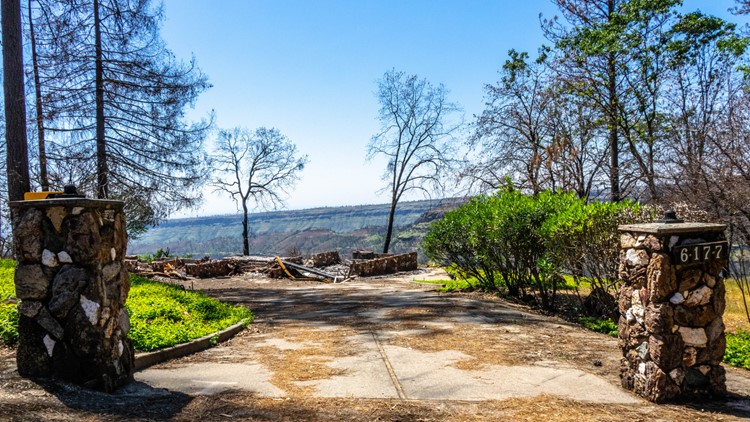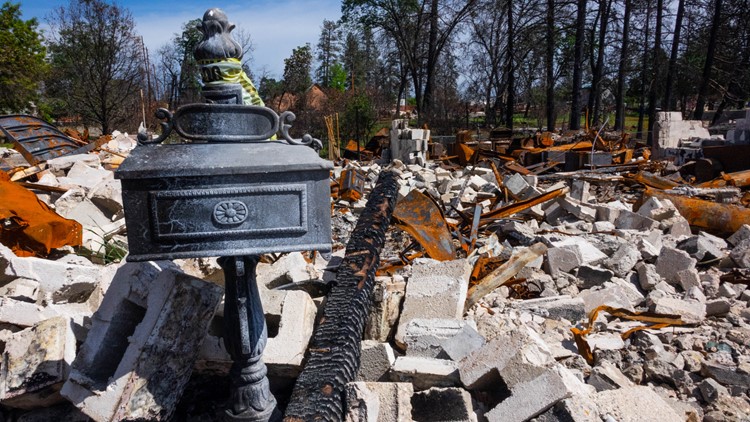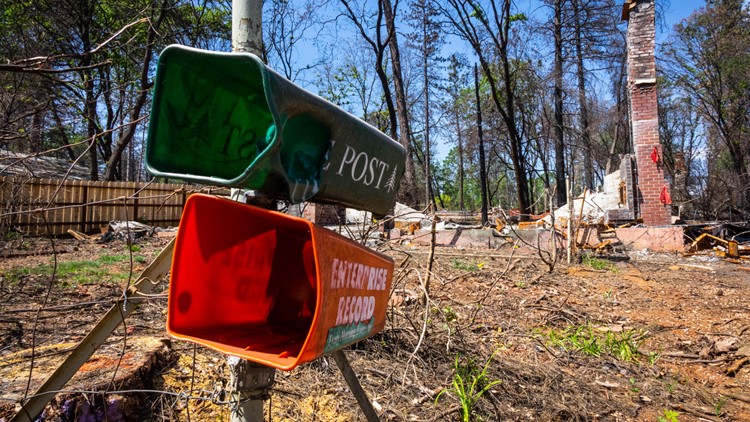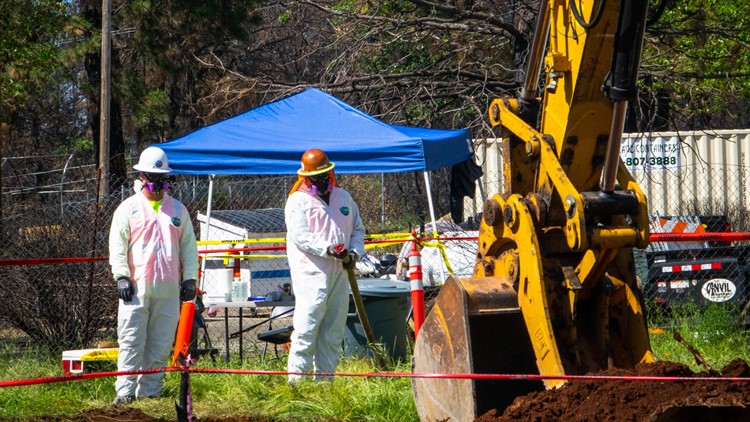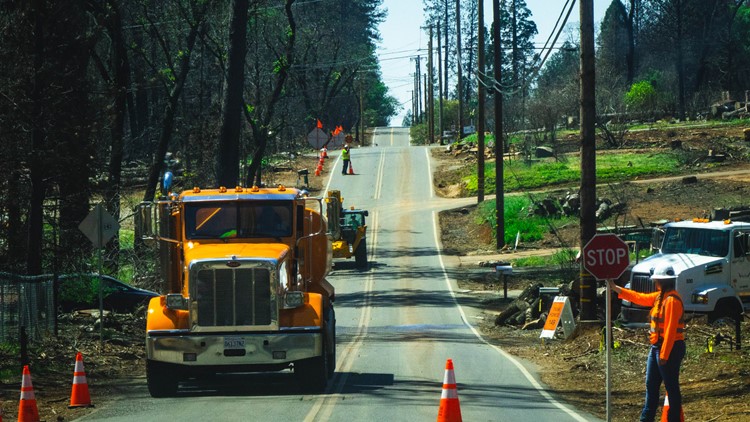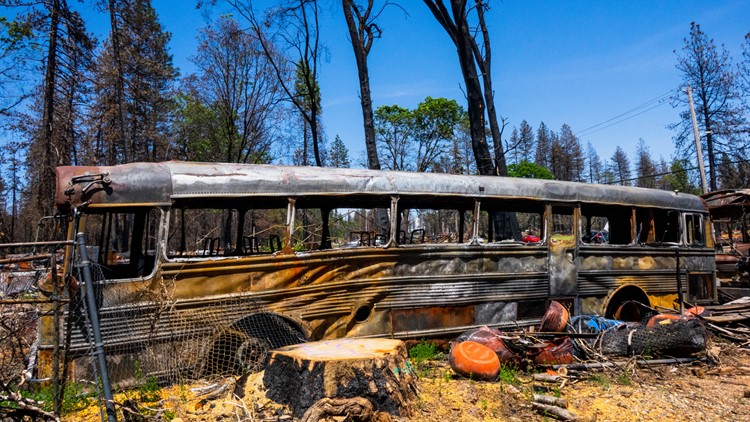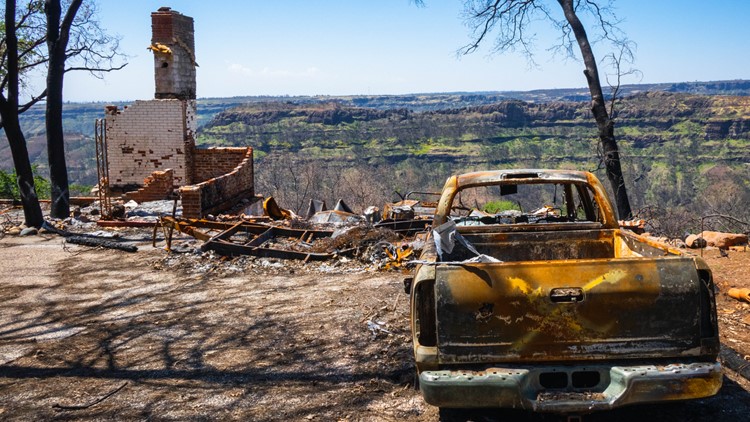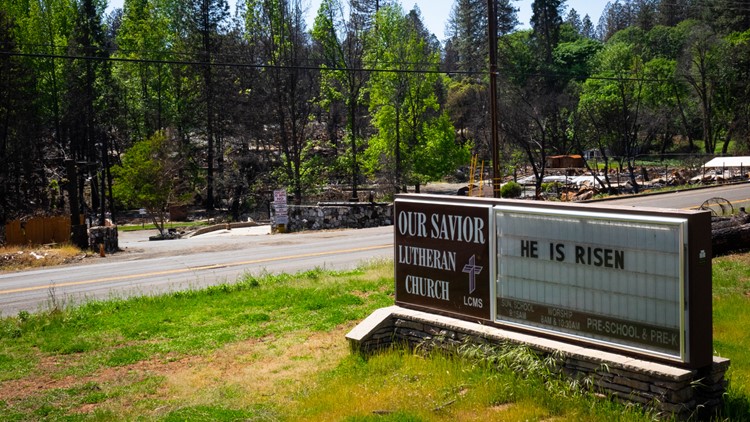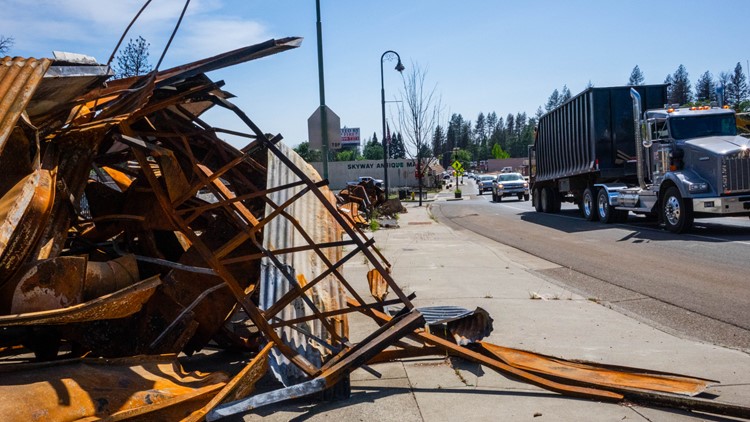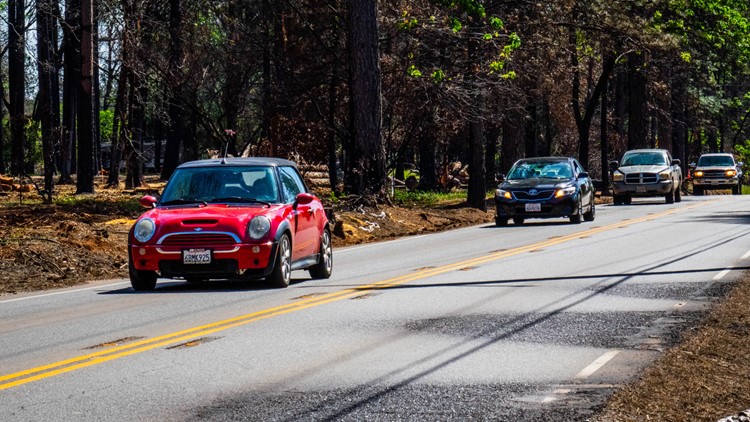CHICO, Calif. — To a visitor, Chico's Main Street fits the perfect picture of a peaceful college city. Bright afternoon sunshine danced through the waving branches of leafy green trees Wednesday as happy bicyclists passed people lounging in City Plaza.
Pervasive trauma, however, underlies this otherwise seemingly average spring day, which marks six months since California’s most devastating wildfire broke out 25 miles to the northeast of downtown Chico.
The Camp Fire wiped out 15 percent of Butte County’s housing stock. That’s 14,000 homes, according to Butte County Housing Authority Executive Director Ed Mayer.
"Here, six months in, we're really seeing our second wave of displacements,” Mayer explained. “A lot of the temporary housing facilities that people had secured - either through FEMA or other resources, privately or publicly - after six months, those transitional resources go away. So now what?"
The State of California released numbers this month revealing that the population of Chico had swelled by more than 19,000 people by the beginning of the year.
That’s a 20.7 percent increase in Chico’s population, said Mark Orme, city manager. He said he normally anticipates the average 2 to 3 percent annual growth rate.
“There’s no way to really manage that. There’s no way to plan for that,” he said. He said the influx statistically makes Chico the "fastest-growing city in the state of California."
Now, six months after the Camp Fire’s genesis, a crisis-level housing shortage tops the list of challenges still facing his city.
"A lot of folks who are still living on couches, who are living in hotel rooms, who are living in trailers or RVs, they need a higher level of stability and so they're looking for it,” Orme said.
Many who lost their homes in the Camp Fire – people who lived in and around the small communities like Paradise, Concow, Magalia, Pulga – are low-income, elderly and/or living with disabilities. Moving out of Butte County is a financial impossibility for many victims, Mayer said. The nearby city of Oroville saw its population grow by more than 4,000, according to the state.
"We've got 19,000 people living [in Chico] who really don't have a place to live,” Mayer said. “You could argue that they're homeless, but really they're in transition."
The Camp Fire wasn’t Northern California’s only incredibly destructive wildfire in 2018. Because of that, the housing crisis extends well beyond Butte County.
“Housing stock and available housing in north state has just been terribly compromised, so we’re all struggling,” Mayer said. “Our community is no exception. In fact, it’s probably the poster child because Paradise, outside of Chico, is one of the largest residential communities in the north state.”
What has become clear after six months of recovery is that an end to the trauma and rebuilding is not in sight.
"One of the biggest things that we've learned is that it's not a sprint,” Orme said. “You can't get through a disaster of this size over a few months. It's going to be a few years."
Even people whose homes were spared are impacted. Wendy Porter knows this firsthand.
"I had a very good friend lose their house, and so he and his family lived with us for about four months,” she said.
Porter is managing director of Chicostart, a non-profit tech startup incubator that has helped more than 200 business owners displaced by the Camp Fire.
"Now we're finding that the time that they need help is lengthening. It's not just a six-month problem. It's going to be two years, three years, four years," Porter said. "We’re finding that in order to keep these businesses here locally, we really need to give them the help they need to rethink their marketing strategies, go into different markets."
Paradise: 6 months after Camp Fire
But as hard times often do, the last six months have shown the true character of this community.
"It's easy to get depressed,” Mayer admitted, adding that of the 19 houses that once stood on his street, only seven survived – and his is one of them. “There’s a lot of survivors guilt…What do we rally around? The community spirit."
Orme agrees.
"This community has come together and has done an amazing job of helping overcome that situation, and we're going to continue to forge ahead and find solutions,” he said.
Chico is one of California's few full-service cities without any city sales tax. Orme said he plans on polling Chico’s residents in coming months about whether they might consider adding a city sales to tax to help pay for some of the expanded services linked to the sudden population explosion.
"When you look at an estimate on that increase in population, you're looking at probably an approximately $6 million-plus need for additional resources to serve that population," Orme said.
About $4 million of that is needed by Chico’s Police Department, Orme said. Other departments-in-need include fire, public works and code enforcement.
There’s not an immediate plan to fill that gap.
The state has promised to back-fill property tax losses for Chico this year and for the next couple of years, to the tune of $1 million annually, Orme said. So much property was destroyed, and the state requires counties to share the burden of property tax losses.
Supporting Chico and Oroville and their swollen populations in the wake of the Camp Fire is new territory for California.
“I’m not entirely sure how they’re going to manage this scenario where it’s a population that has shifted from one city that was burned down and destroyed to another,” Orme admitted.
Mayer wonders what this will mean in the long-run, since the financial impact of property loss will span far beyond three years.
“With the loss of Paradise, we just had our left arm or our right arm cut off,” Mayer said. “How do we get that arm back? That’s what we’re wrestling with right now.”
He said the influx of people has also lead to congested traffic in and around Chico.
“Everyone we communicate with in the community is being impacted one way or another – if not directly, through association,” he said.
Mayer said if Paradise can be rebuilt in a way that still serves the low-income, elderly and disabled population the Camp Fire displaced, it would become a role model for the rest of the state, if not the nation.
“There’s an opportunity to show how a rebuild can address the needs of all citizens. Whether we realize that opportunity or not, that’s for another day,” Mayer said.
In the meantime, Chico is trying to make it easier for people to create more housing. Orme said the city is allowing homeowners to convert buildings on their property into liveable space for 25 percent of the normal cost to do that. It has also authorized some administrative permits to allow people with large plots of land to host RVs and campers.
“It’s a challenge, to say the least, but that’s…what we’ve been called to do right now as a city,” Orme said. “We’re going to continue to find ways of helping the survivor population and continue to keep the quality of life here in Chico that our residents love and they deserve.”
Continue the conversation with Becca on Facebook.
________________________________________________________________

